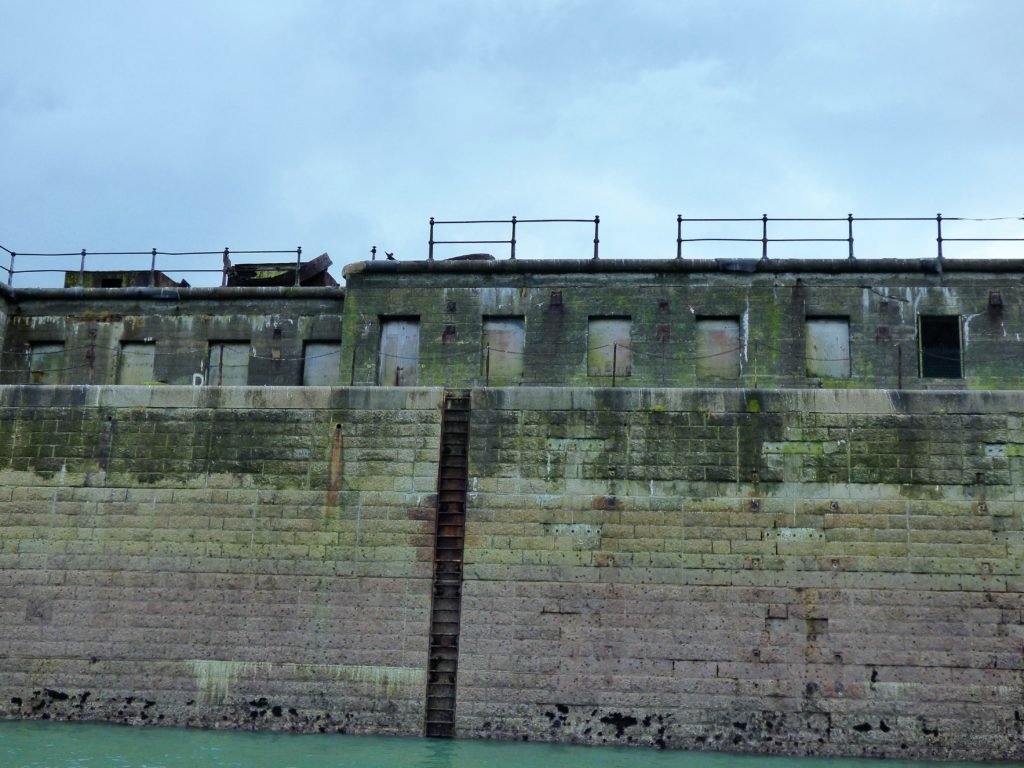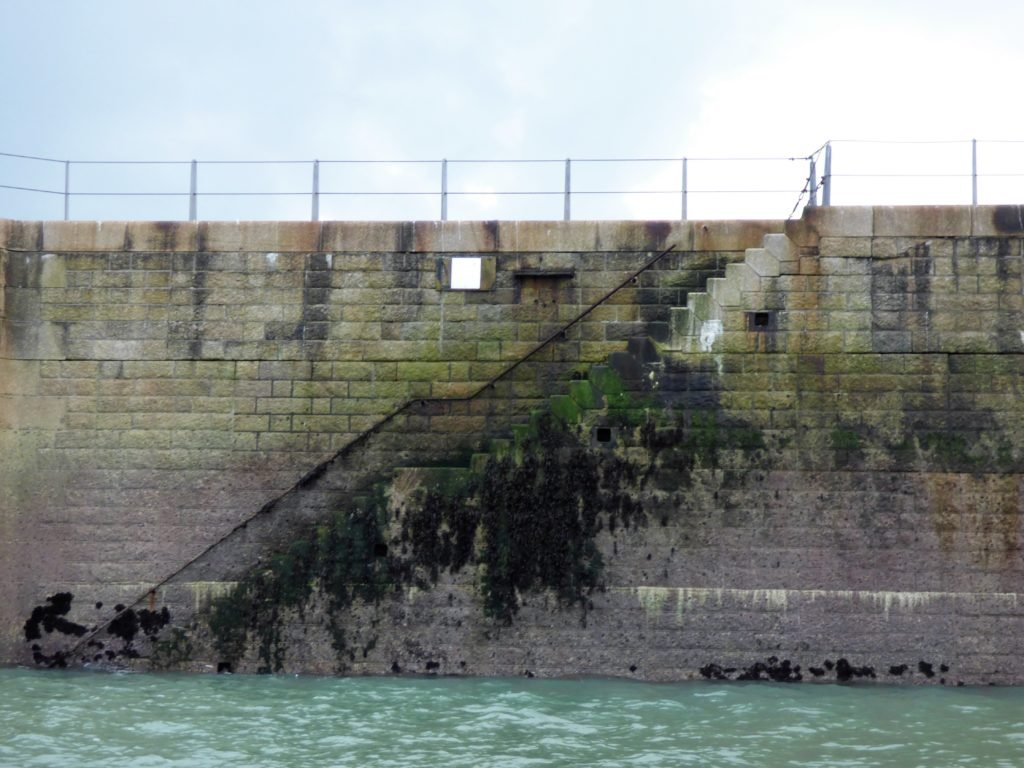
Want to visit the White Cliffs of Dover? By far the best way is from the sea!

After travelling from St Leonard’s Warrior Square Station to Dover, via Ashford International Station (the trip is about one and a half hours), then a short taxi ride to the seafront, I met the crew at Dover Sea Safari for my journey out into the English Channel and exploring the white cliffs.

What a fabulous adventure!
…and before I step you through my photos, check out this video I found on YouTube – we didn’t have waves quite as high, but it was definitely just as much fun!


…and although the sky looks ok in most of these photos, there was a huge patch of grey/green/black clouds that looked menacing – I did, however, inform our captain that I had placed an order for no rain to fall until we were safely back from our trip – and……… Wish granted!

In what looks like an over-sized inflatable dingy (but is in fact a phenomenally sturdy RHIB powerboat), under the direction of our boat captain and tour guide, James, we cast off into Dover Harbour… (oh, and the man on the dock is John – he’s with the RNLI (Royal National Lifeboat Institution))







This is the old Customs Watch House – well, not quite as old as it looks. Built in 1909 and designed by Arthur Beresford Pite, this building was home to the navy during both WWI and WWII. After the end of WWII when it was no longer necessary to heavily protect the English Channel, and as commercial shipping increased to a point the current harbour was unable to support it, leisure boating and ferry terminals became the residents in the harbour and as such, there was no further maritime use for Customs Watch House. It is now apparently used as office space for an aggregates company.

…then it’s out past the Dover Breakwater…

Constructed of concrete blocks from 26 to 42 tons each, the surface of the breakwater was faced above sea level with granite. Housing two cast iron lighthouses, the island breakwater is 4212 feet in length, running east to west between the southerly ends of the Eastern Arm and the Admiralty Pier, with the east end curveing to north.



Built between 1898 and 1909, it was designed as the southern breakwater to a vast artificial harbour called Admiralty Harbour with its purpose to provide a refuge for the British Fleet.





In the First World War, this was a haven for battleships and submarines protecting the Channel, and in the Second World War the breakwater played a key part in the Dunkirk evacuation as 200,000 men were returned from Dunkirk to Dover in eight days.



…and now for the cliffs!

What makes the White Cliffs of Dover white?
They are made out of chalk – just like the type of stuff we used to use on blackboards (ok, now I am really showing my age).
The chalk layers built up gradually over millions of years and are formed from the skeletal remains of minute green algae.
…and if you look closely, you will see horizontal black lines – this is flint.

OK, so what’s with the caves?
Many of the caves in the cliffs were used for smugglers – but a large proportion were used during WWI and WWI. In fact, until recently, people still used the zig-zag steps that were carved by the armed forces into the rock to get down to this beach – that is until a chunk of the cliff broke off (see on the right hand side of the photo, there is a gap in the path and a huge rock on the ground with a crack in it).



Hemp and matches on the same ship?
Next to the zig-zag stairway, you will notice a straight line down the face of the cliff. This was the result of ropes being used (before the stairway was built) to rescue people from the wreck of the SS Falcon whose cargo of hemp and matches caught fire. Seriously! Some bright spark (pun intended) thought it was a good thing to put them both on the same boat.
At low tide, it is still possible to see the remains of the shipwreck.





Here below you will see a much deeper groove carved into the cliff-face.

This was as a result of saving people and cargo from in 1910 from the Preussen shipwreck. Built in 1902, she was at the time the world’s only ship with five masts carrying six square sails on each mast.
Here is a photo from Wikipedia showing her in full sail – wasn’t she magnificent!!!

Unfortunately after encountering bad weather, she collided with the steamer Brighton and although she wasn’t severly injured and the captain found safe anchorage, the weather worsened and she was driven ashore at Crab Bay.
Among her cargo of precious items, were reportedly twelve German grand pianos – with the running joke for sometime being that every house near Crab Bay now had a grand piano – I wonder where they came from? 🙂




These houses once owned by Noel Coward, were sold to Ian Fleming with Fleming actually living in the house on the right for some time and writing many of his famous James Bond novels there.



Here we find the beautiful Walmer Castle, one of the favourite residences of one of my favourite Royals, The Queen Mother.
Built during the reign of King Henry VIII, it is now home of the Lord Warden of the Cinque Ports, with the flying flag indicating he was in residence that day.



…and on our way home, that’s when we opened the throttle away we went blasting through the waves doing doughnuts, infinities… Sooooo cool!
I had a blast! Thank you all.




One comment